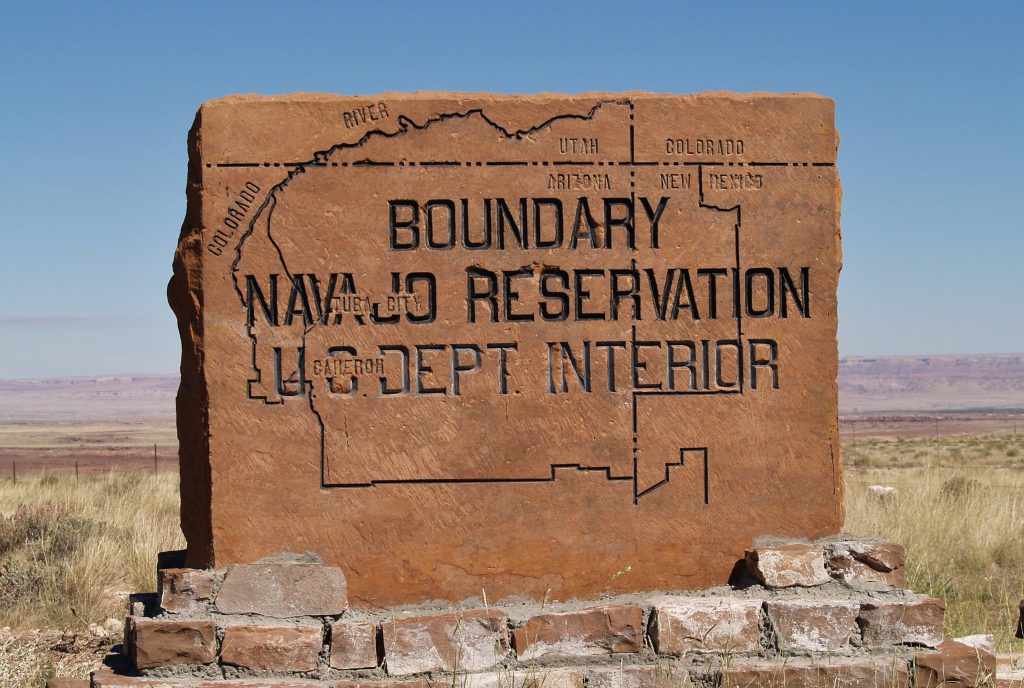By Kerry Bennett
Office of the Vice President for Research
High rates of overweight and obesity—as well as related diseases such as Type 2 diabetes—are serious public health concerns for the Navajo Nation. With more than 300,000 enrolled members in 110 chapters spread across 27,000 square miles in northeastern Arizona, New Mexico and Utah, it is one of the largest American Indian tribes in the U.S. The Indian Health Service estimates that 25,000 members of the Navajo have Type 2 diabetes and 75,000 are pre-diabetic.
To combat these problems, which health experts associate with overconsumption of soda, fat and processed foods and inadequate physical activity, Navajo Nation president Ben Shelly signed the Healthy Diné Nation Act (HDNA) into law in 2014, mandating a 2 percent tax on “unhealthy foods” purchased in the Navajo Nation.
The HDNA was designed to help change health behaviors by discouraging tribal members from purchasing high-fat and high-sugar food items with little or no nutritional value, including sweetened beverages, chips, candy, frozen desserts, pastries and fried foods. The law also was designed to promote the consumption of fresh produce and increased physical activity. It mandates that revenues generated by the sales tax be set aside for projects that improve community wellness, such as vegetable gardens, farmers markets, exercise equipment, health classes and walking trails.
Navajo Nation officials Del Yazzie, director of the Navajo Epidemiology Center (NEC), and Shirleen Jumbo-Rintila, legislative associate for the Navajo Division of Community Development (DCD), are working in a collaboration with faculty members of NAU’s Department of Health Sciences—professor Tim Behrens, associate professor Dirk de Heer and associate professor Priscilla Sanderson, who is director of NAU’s Center for American Indian Resilience—to study the implementation of the tax.
“Our understanding of the factors related to implementation of taxes such as these are crucial to developing policies that work,” Behrens said.
Although several cities have enacted sales taxes on soda and other sweetened beverages, including Philadelphia, Chicago, Seattle and Berkeley, the HDNA tax is the first of its kind, making the Navajo Nation a leader in this area of public health policy. Officials from other tribes, as well as from state and municipal governments throughout the United States, are waiting to see the outcomes of the legislation. Because of the intense scrutiny, the researchers note that findings from the study have a substantial potential to inform public health policy nationwide.
“The Centers for Disease Control and Prevention are watching the Navajo Nation to see our results,” Jumbo-Rintala said. “We’ve become an icon for public health.”
The one-year study is funded through a $225,000 grant from the Robert Wood Johnson Foundation (RWJF).* During the first phase of the project, the team will gather data related to the tax to better understand how the funds have been collected and distributed to chapters in the Navajo Nation. The team also will seek to understand how the revenue collected has been invested. For example, leaders from several chapters have already used tax revenues to build gardens and purchase exercise equipment for their chapters.
Finally, researchers will work with community partners in an attempt to understand changes in attitudes surrounding the tax since its implementation. The team will present its findings to Navajo Nation leadership and share the study with other tribes, RWJF, the CDC and other public health agencies.
“One of the unique things we’re trying to do with this study is understand the factors that make an initiative like this a success,” Behrens said. “The HDNA is the first of its kind, so the Navajo Nation will have the opportunity to share its recommendations for improving health with other tribes.
“NAU is very proud to be supporting this project with our technical expertise as the Navajo Nation takes the lead in improving health.”
“I’m excited about this project,” said Sanderson, who is a member of the Navajo Nation. “I’m really proud of our tribal council for getting engaged in reducing the rate of obesity and Type 2 diabetes, which has become an epidemic among the Navajo people. I’m so happy that Del and Shirleen are involved in this project as our tribal leaders.”
*Support for this research project was provided by the Robert Wood Johnson Foundation. The views expressed here do not necessarily reflect the views of the Foundation.



